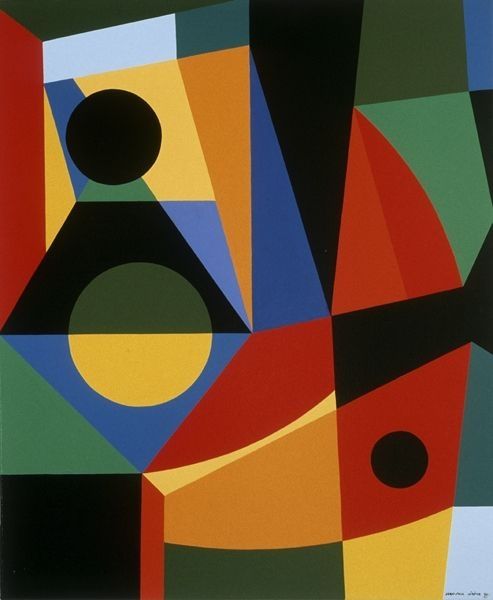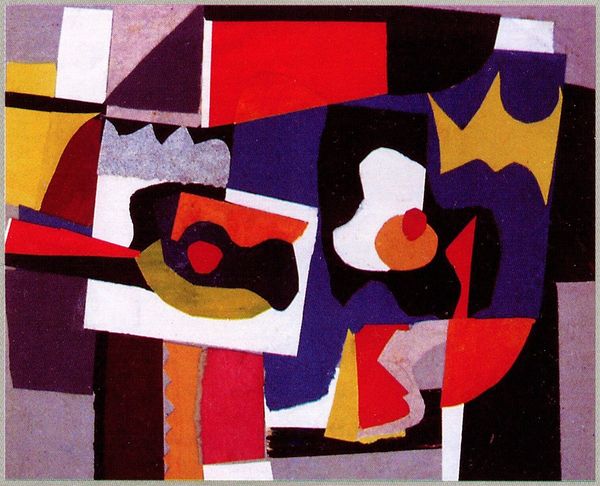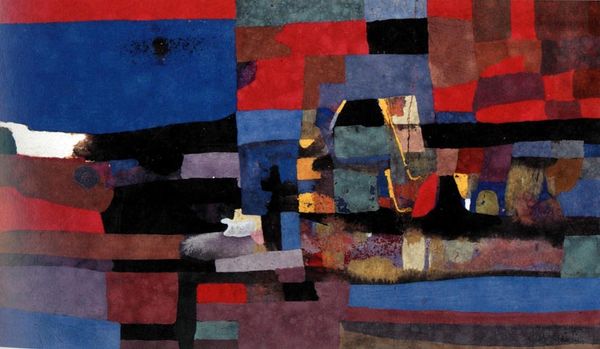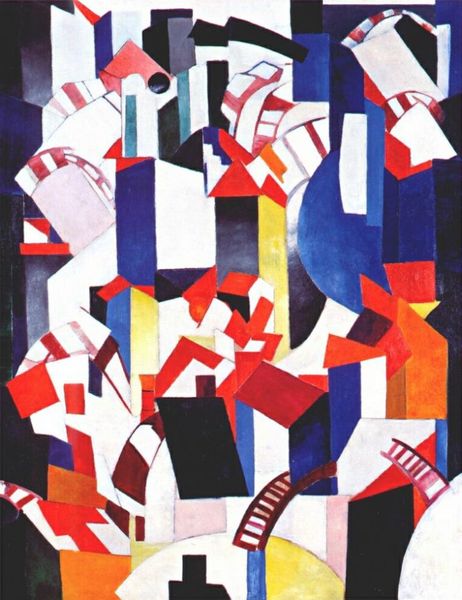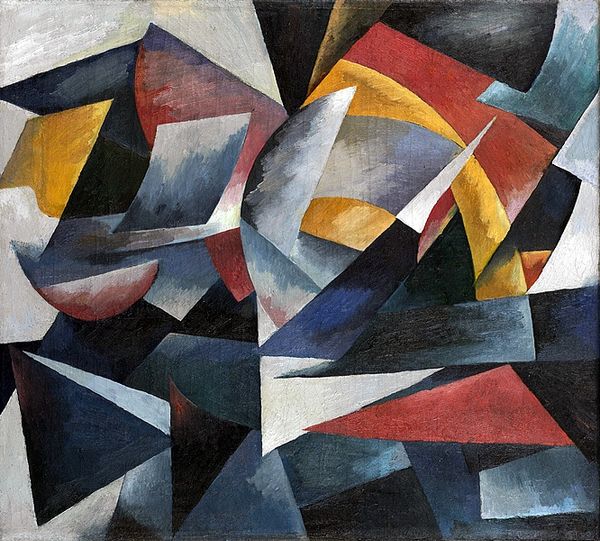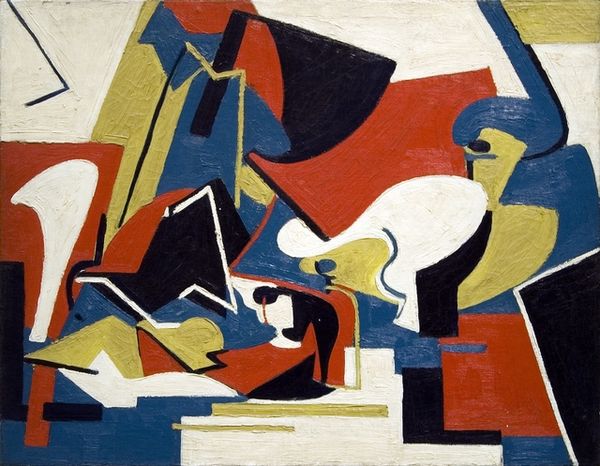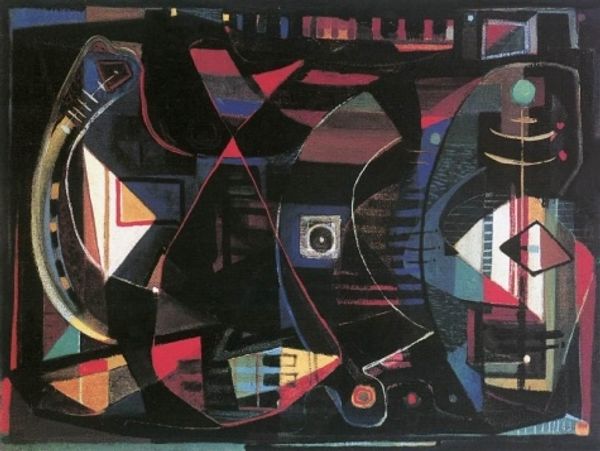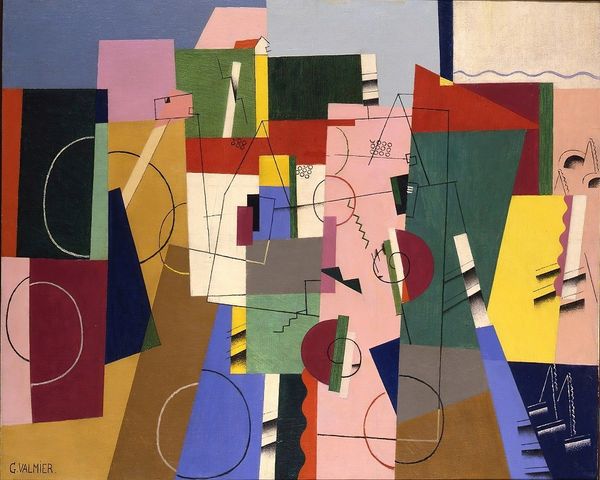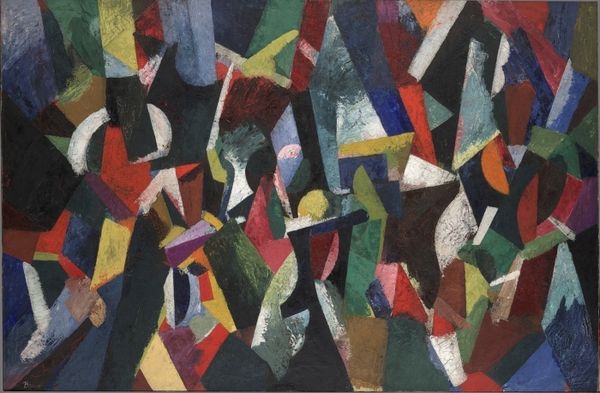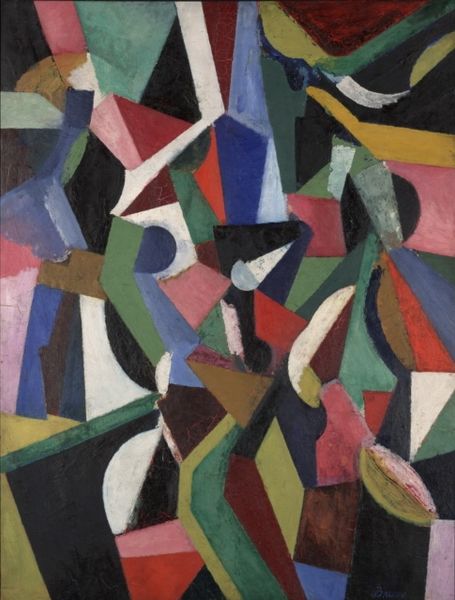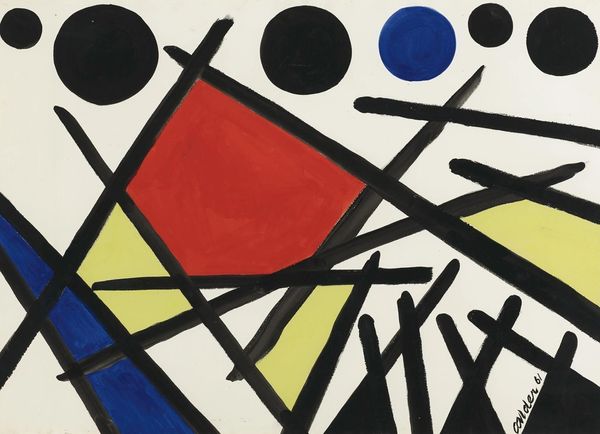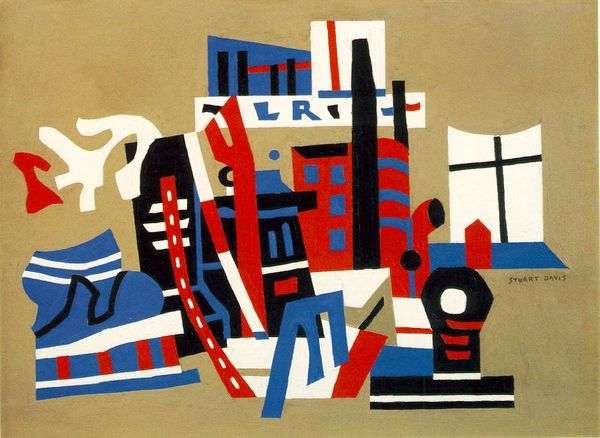
painting, acrylic-paint
#
abstract-expressionism
#
non-objective-art
#
painting
#
acrylic-paint
#
form
#
geometric-abstraction
#
abstraction
#
line
#
modernism
Dimensions: 59.7 x 74.9 cm
Copyright: Ad Reinhardt,Fair Use
Curator: Ad Reinhardt’s "Red and Blue Composition," created in 1941, is an excellent example of the artist's exploration of geometric abstraction using acrylic paint. It has such a striking color palette, very assertive. Editor: It feels almost combative, doesn’t it? The way these blocks of red and blue jostle against each other against the dark ground creates a sense of tension and unrest, despite the formal simplicity. The starkness really heightens that feeling of discord. Curator: Exactly. Consider Reinhardt’s broader work; he was actively involved in political activism. So we might see this tension as a reflection of the ideological conflicts of the time. The choice of primary colors could symbolize fundamental, opposing forces. What does it signify when one simplifies in times of chaos? Editor: Simplification can also represent a sort of pure, distilled essence, reducing form to its most basic elements. If you look closely, you'll notice subtle variations in the shapes and how they interact; a fascinating interplay of positive and negative space. Even the texture seems important. It gives an illusion of layering, and thus, added depth. Curator: Agreed. Those variations provide points of entry for considering how power structures might manifest or become hidden within abstraction itself. And given the period—just before America's formal entry into the Second World War—Reinhardt’s non-objective art could be seen as offering a commentary on the breakdown of traditional societal structures. Is he trying to break down or put back together something from a world breaking down? Editor: The question is where those elements might lead if combined. What's fascinating here is how the geometric forms create an almost architectural composition. They imply some larger structural organization that is always in flux. And that, ultimately, speaks to abstraction’s unique potential. Curator: Absolutely. Art of this nature challenges us to look beyond what is immediately apparent and really think about what visual forms, when consciously deployed, might communicate about wider cultural forces and, equally, about individual and collective identities. Editor: Ultimately, its enduring power lies in its ability to distill complex concepts into simple yet evocative forms that encourage open interpretations. This makes this work incredibly accessible, even though we cannot tell immediately what any specific choice implies.
Comments
No comments
Be the first to comment and join the conversation on the ultimate creative platform.
